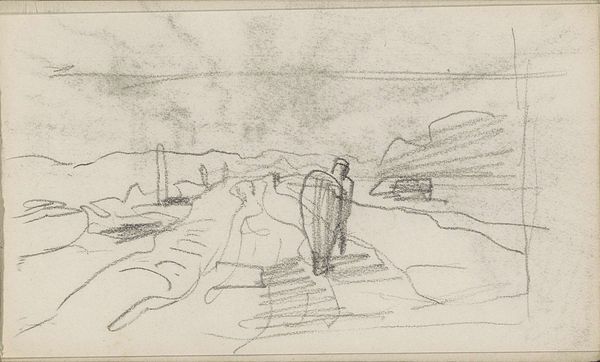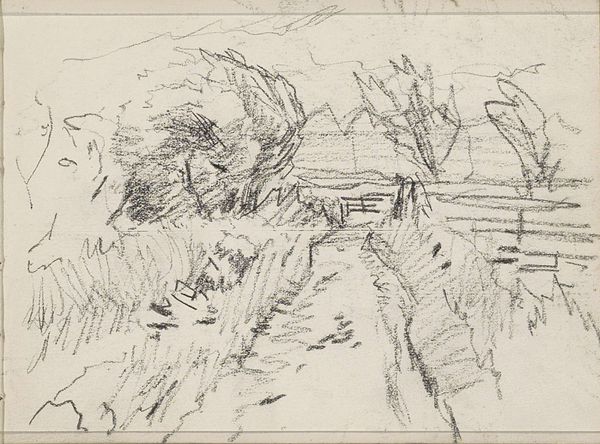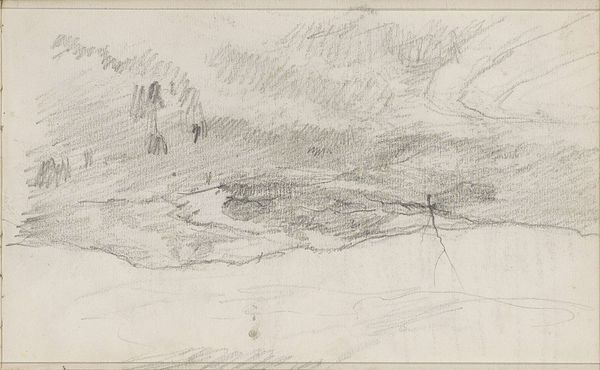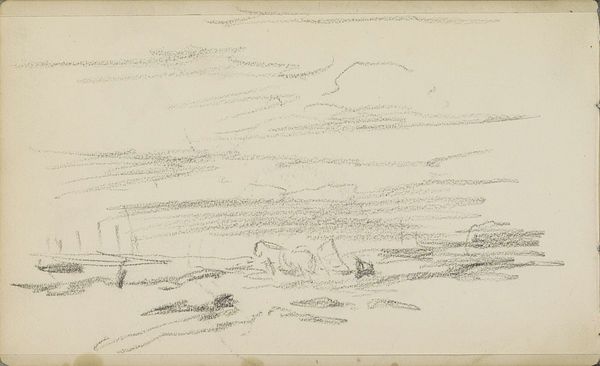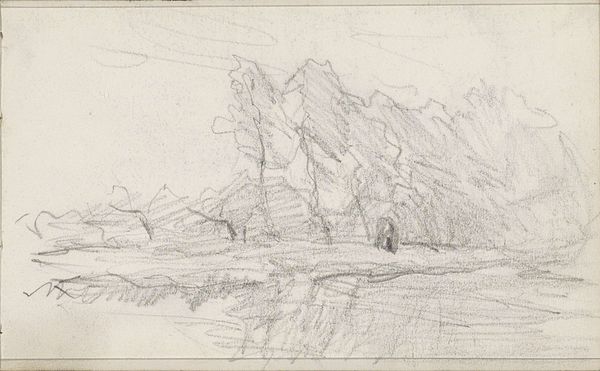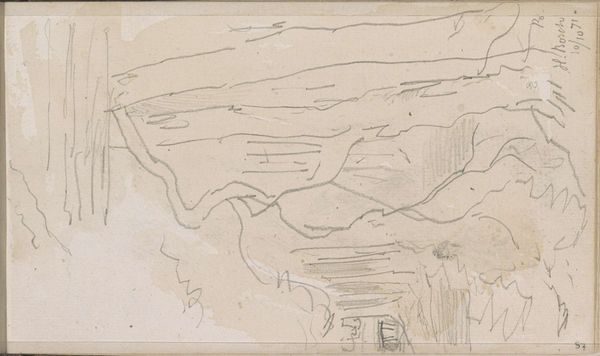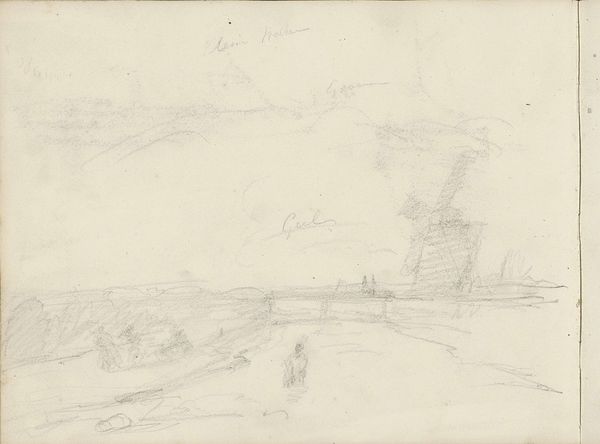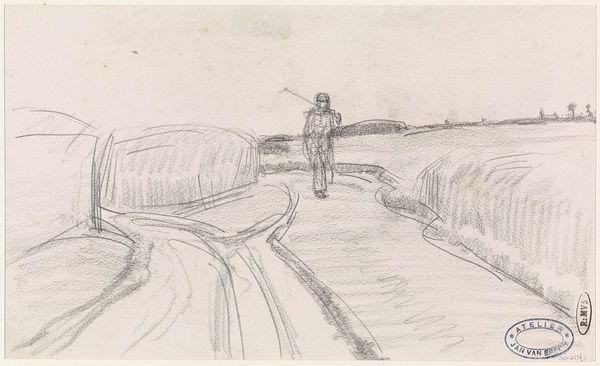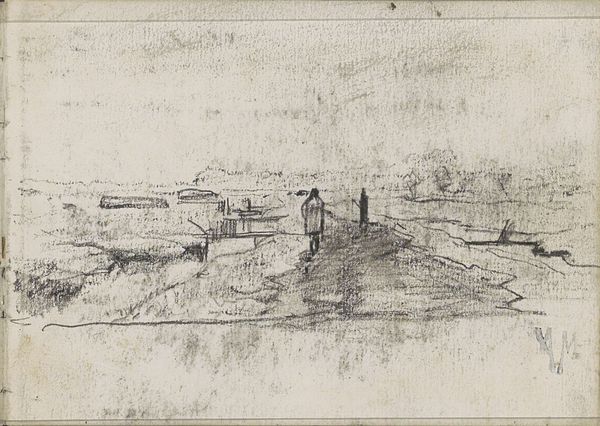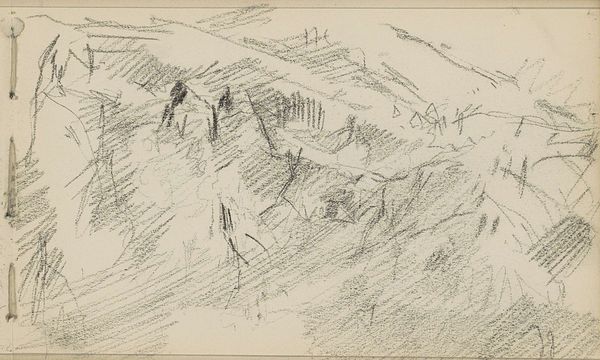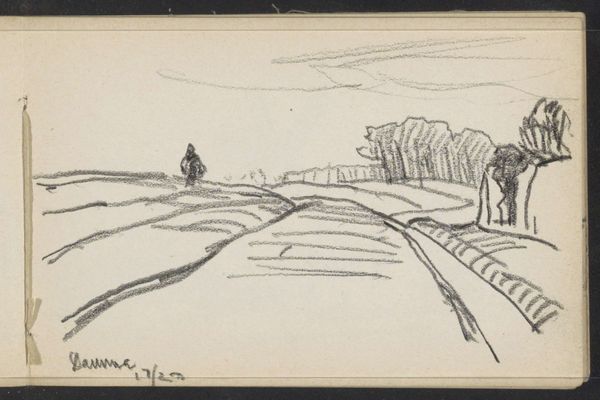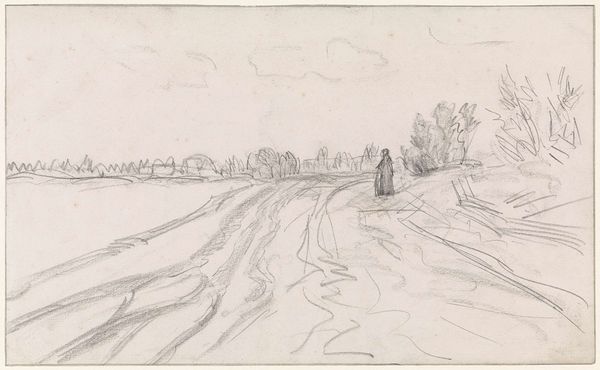
drawing, pencil
#
drawing
#
dutch-golden-age
#
impressionism
#
landscape
#
pencil
#
genre-painting
#
realism
Copyright: Rijks Museum: Open Domain
Curator: This drawing, executed in pencil, is titled "Paard en figuren op een pad langs een vaart"—which translates to "Horse and figures on a path along a canal." It comes to us from Anton Mauve, created sometime between 1848 and 1888. Editor: It's stark. Sparse lines create this rather bleak scene, very reminiscent of the Dutch countryside but with an air of loneliness. Curator: Mauve was a prominent figure in the Hague School, which embraced Realism and a subdued palette, and you can really see the influence in this landscape. The figures are dwarfed by the vastness of the scene. What statements might Mauve be making here? Editor: Certainly, there's a nod to the working class here and a commentary on rural existence. How they were really at the mercy of forces larger than themselves—economic, agricultural, even the sheer indifference of nature itself. I would propose to see how that may shape and impact social inequality and identity during this time. Curator: Right, and this also places it within the tradition of Dutch landscape painting— a celebration of the national landscape while simultaneously reflecting societal realities. Consider the absence of vibrant color, perhaps mirroring the socio-economic environment. Editor: Absolutely. This understated method can serve a social function—showing empathy while subtly criticizing the status quo. By focusing on the quotidian aspects of these rural lives—these figures traversing a solitary road—Mauve demands that viewers bear witness to their stories. Curator: It encourages us to consider the unseen labor and the unsung lives that built the Dutch nation. There is some intersection between the traditional landscape art with genre-painting—everyday life observations. Editor: Exactly. And with Mauve’s choice of media, a simple pencil on paper, he echoes the simplicity and accessibility of rural life. The art’s inherent realism demands recognition. It bridges divides between the canvas and the viewer’s own social conscience. Curator: Yes, the stark simplicity serves as an appeal to authenticity. These historical works were sometimes radical acts pushing people to truly observe life happening all around them. Editor: Agreed, seeing this has renewed my perspective of Dutch landscapes beyond serene pastorals, recognizing how art portrays societal experiences. Curator: And for me, considering it through today’s museum lens, it emphasizes the ongoing relevance of pieces tied to labor movements and social reflection.
Comments
No comments
Be the first to comment and join the conversation on the ultimate creative platform.
